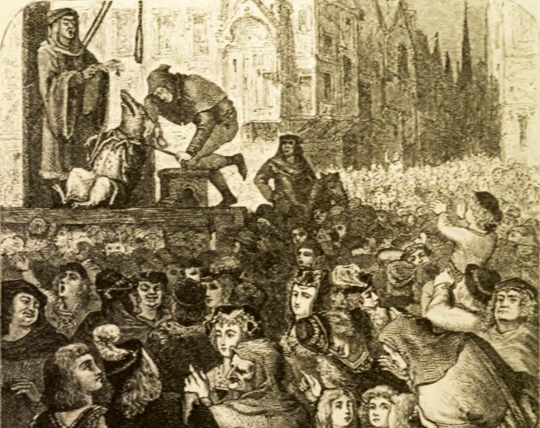In Isn’t it funny, how a bear likes honey?, I considered the conviction of a Macedonian bear for theft of honey and criminal damage to a beekeeper’s hives; and in Are some goats more equal than others? I noted that a goat was being held on suspicion of committing an armed robbery in Nigeria. Now I find another story in the same vein:
Bugs and Beasts Before the Law
Murderous pigs sent to the gallows, sparrows prosecuted for chattering in Church, a gang of thieving rats let off on a wholly technical acquittal – theoretical psychologist and author Nicholas Humphrey explores the strange world of medieval animal trials.
… A few years ago I lighted on a book, first published in 1906, with the surprising title The Criminal Prosecution and Capital Punishment of Animals [pdf] by E.P.Evans, author of Animal Symbolism in Ecclesiastical Architecture, Bugs and Beasts before the Law, etc., etc. The frontispiece showed an engraving of a pig, dressed up in a jacket and breeches, being strung up on a gallows in the market square of a town in Normandy in 1386; the pig had been formally tried and convicted of murder by the local court. … All over Europe, throughout the middle-ages and right on into the 19th century, animals were, as it turns out, tried for human crimes. Dogs, pigs, cows, rats and even flies and caterpillars were arraigned in court on charges ranging from murder to obscenity. The trials were conducted with full ceremony: evidence was heard on both sides, witnesses were called, and in many cases the accused animal was granted a form of legal aid — a lawyer being appointed at the tax-payer’s expense to conduct the animal’s defence. …

Such a interesting article which animals were, as it turns out, tried for human crimes. Dogs, pigs, cows, rats and even flies and caterpillars were arraigned in court on charges ranging from murder to obscenity. In deed in ancient times together with animals they don’t have protection on animals. Thanks a lot.